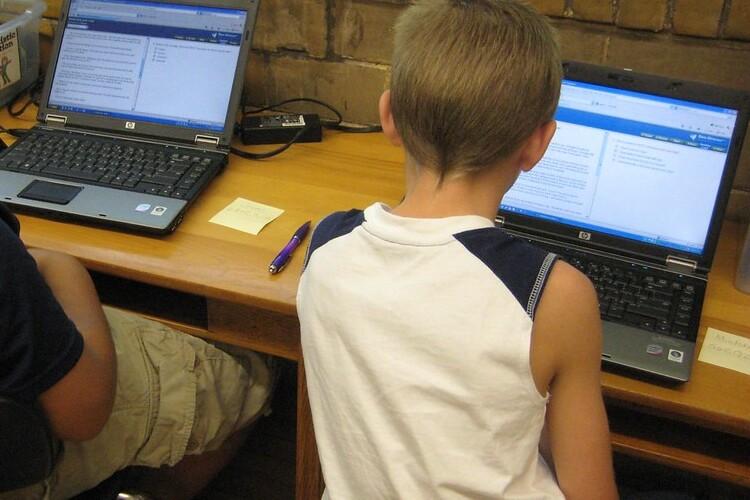The fourth industrial revolution is well underway, and we’re already seeing its impact on industries worldwide. One of the latest advancements in technology is the introduction of ChatGPT, an advanced chatbot that received a staggering 100 million sign-ups in its first two months1. Its advent has sparked conversations about the implications of artificial intelligence (AI) in education. While some believe that AI can be an excellent teaching aid, others fear that students will use it for plagiarism.
Resistance can often arise with the introduction of a new revolutionary tool. AI has received mixed reactions from the academic community; while some view it as a valuable teaching aid, others express concerns that students may use it for plagiarism. Grant Smith, VP of Education at Code Ninjas, is of the opinion that ChatGPT and other AI tools are on the cusp of playing a significant role in the future of learning. This could include automated tutoring, essay grading, and the development of curriculum content. Although this new technology challenges traditional teaching methods, embracing AI has the potential to revolutionise education. To fully utilise AI’s capabilities, the focus should be on introducing the next generation to AI at an early age and incorporating the technology into the classroom.
There is a common belief in many industries that the introduction of technological advancements will result in the loss of millions of jobs. While robots and AI have displaced certain job roles, it’s anticipated that by 2025, AI will generate approximately 97 million job opportunities. Nevertheless, teaching is widely considered to be among the most humanised professions, and it’s reassuring to note that AI will never entirely replace teachers.
By leveraging AI technology, the learning process can be tailored to suit each individual’s needs. AI has the capacity to assimilate information about a student’s interests, learning history, and capabilities, and can adjust educational programs accordingly, offering materials that are most relevant to them. Additionally, AI-driven learning platforms collect vast amounts of data to recommend optimal learning options based on each student’s perceptual abilities, leading the way to more personalised education.
By utilising tools like ChatGPT, educators can input student data to forecast future performance and intervene promptly to provide support for those who require it. Moreover, AI can generate educational content, offering ideas for customised and engaging activities that suit individual student needs. With the help of AI, educators gain more control over the direction and manner in which they further their students’ learning. This frees up the time typically spent on developing lesson plans and handling administrative tasks, allowing teachers to have more one-on-one interactions with their students.
Concerning students, many schools and educators have hesitated to introduce AI and tools like ChatGPT due to concerns about cheating. Nevertheless, the potential benefits of AI as a valuable educational tool outweigh the risks associated with it. The example of calculators is relevant in this context; once prohibited due to concerns that they would hinder students’ mental arithmetic abilities, calculators are now widely used and encouraged, except in circumstances where arithmetic skills are explicitly taught. We don’t consider calculators a threat to our profession, but rapid advancements in AI are now causing similar worries about the future of teaching and the global workforce. However, one of the most significant advantages of AI is that it can handle low-level, repetitive tasks, allowing teachers and other professionals to focus on higher-level functions that computers are not yet capable of performing.
That is why Code Ninjas advocates for teaching students about AI and tools like ChatGPT instead of shielding them from it. These technologies are here to stay, and they will only get better and more ubiquitous. As they evolve, we should encourage students to think beyond computers and teach them high-level tasks that computers cannot currently replicate. Although AI and ChatGPT are still imperfect, their shortcomings can promote critical thinking in the classroom. When students have a deep understanding of the topic they are requesting information from ChatGPT, they can evaluate its responses the same way a teacher would. If schools embrace AI thoughtfully as a teaching aid, one that fosters student creativity, promotes critical thinking, provides personalised tutoring, and better prepares students to work with AI systems as adults, especially in a future where it is expected to create millions of jobs, we will undoubtedly witness the benefits it can bring to 21st-century education.
Programs like ChatGPT are at the forefront of transforming the future of education through customised and adaptable learning experiences that cater to individual students’ strengths and weaknesses, along with automated essay grading and feedback. The possibilities for AI in education are vast, and as we continue to discover them, we can look forward to a brighter future in the field. It’s an exciting journey, and I’m eager to see where it takes us.
By Grant Smith, VP of Education at Code Ninjas
References:
1 Reuters, 2023: ChatGPT sets record for fastest-growing user base
2 World Economic Forum, 2020: The Future of Jobs Report 2020
For more information, visit https://www.codeninjas.com/

